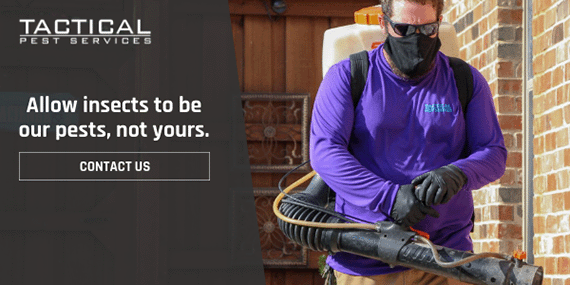It’s official: summer is here in the Lone Star State, and for many, this is the perfect time to enjoy the great outdoors with their friends and family. However, several species of insects, especially wasps, like to spend time outside during the hot summer months that the DFW area is known for. Wasps can be harmful pests for homeowners to deal with, as attempting to exterminate them without proper equipment can lead to a barrage of painful stings from an angry colony.
Why Do Wasps Become More Active In The Summer?
Wasps are predatory insects, and the warm summer weather signals them to leave their nests and hunt for food. Most species of wasps prey on smaller insects for nourishment, but they are also attracted to the sweet smell of sugary items. Ice cream, watermelon, and many other popular summertime foods are extremely appealing to wasps. If you happen to be in their way, there is a chance that you’ll be on the receiving end of their venomous stings. Let’s learn about the different species of wasps that you might encounter in Texas and how you can identify them at a glance.
Southern Yellowjacket
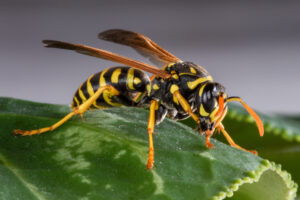
One of the most common wasp species found in Texas, the southern yellowjacket features a distinctive appearance that anyone can recognize.
- Southern yellowjackets feature a black body with bright yellow stripes that extend from its head to the abdomen.
- They are typically among the smallest wasp species found in Texas with an average length of only 0.5 inches.
- Southern yellowjackets tend to build their nests in unnatural areas, such as on the sides of houses and fences. Because of this, the chances of a homeowner finding a southern yellowjacket nest on their property is fairly high.
- Don’t let the diminutive size of the southern yellowjacket fool you; these wasps have aggressive behavioral traits, and are known to launch unprovoked attacks on people in its vicinity.
Cicada Killer Wasp
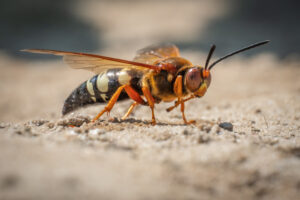
This species has perhaps the most vicious-sounding name of all the wasps on this list, and for good reason. cicada killer wasps are known as such because of their tendency to viciously attack cicadas and take over their nests.
- Also known as the eastern cicada killer wasp, this species is characterized by a reddish body with yellow stripes on its abdomen and thorax.
- The cicada killer wasp is quite large compared to other species, measuring 1.5 inches in length.
- Unlike the other wasps on this list, cicada killer wasps do not build nests; they are a species of burrowing wasp that builds their colonies beneath the earth’s surface.
- Even though cicada killer wasps live underground, that does not make them any less of a threat. Female cicada killer wasps possess massive stingers that are used to paralyze their prey.
Using a recurring pest control service can help keep these pesky wasps away from your home, making it a safer place to be.
Mud Dauber Wasp
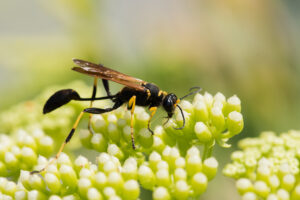
Have you ever noticed a buildup of thin, tube-shaped mud structures on your property? If so, that means that the mud dauber wasp has laid claim to your living space.
- These wasps feature black coloring with yellow legs, and they have long, slender bodies that allow them to fit inside their tubelike nests.
- The mud dauber wasp typically measures in at 1 inch in length.
- Mud dauber wasps are best known for their distinctive nests, which are formed from mud and situated on the sides of trees, buildings, and fences.
- Even though these wasps look menacing, mud dauber wasps are generally less aggressive than other wasp species. Their presence around your home should not be ignored, however; mud dauber wasps possess a potent sting that can cause a great deal of pain.
Bald Faced Hornet
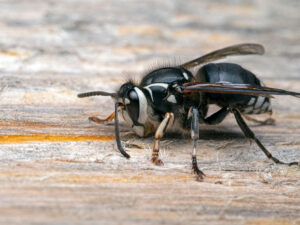
Despite its name, the bald faced hornet is not actually a hornet; they are a species of wasp that can be found all over Texas.
- Bald faced hornets are easily recognizable thanks to the white coloring of their heads and the stark black coloring of the rest of their bodies.
- The average bald faced hornet measures about 0.75 inches in length.
- Of all the wasp species on this list, bald-faced hornets build the biggest and most intricate nests, with many of these hives spanning an impressive 14 inches or more in diameter. Their nests are constructed from a gray, paper-like material that is formed from a mixture of tree fibers and wasp saliva.
- Bald faced hornets are a social species of wasp, meaning they live in colonies and build nests together. Encroaching on a bald faced hornet’s territory can signal an attack from the entire colony.
At Tactical Pest Services, we specialize in creating safe, pest-free environments for everyone. These species of wasps can pose a threat to the safety of you and your family, but being able to recognize the different wasps that emerge in the summer is important for helping everyone stay safe in the summertime. From commercial to residential services, Tactical Pest Services is here for you.

